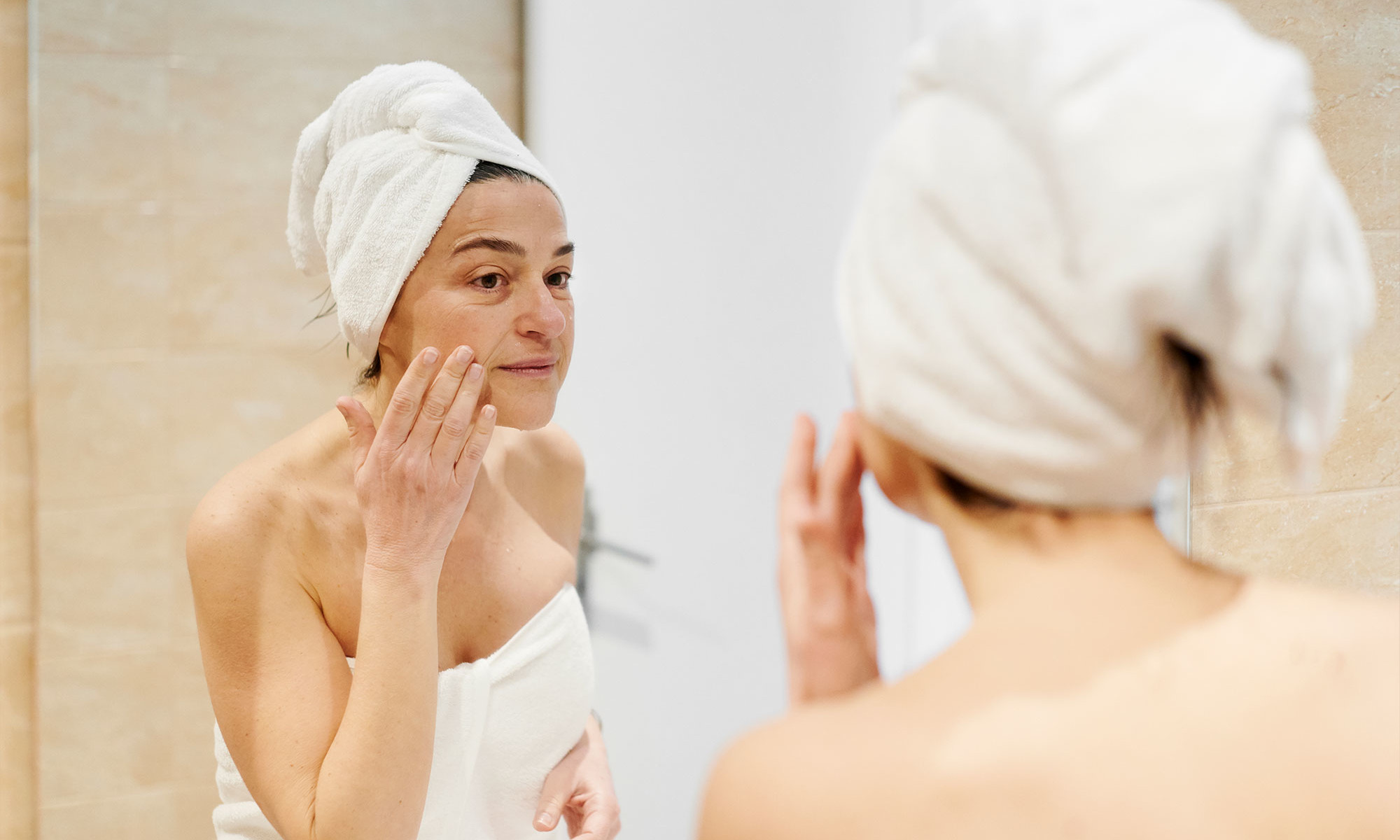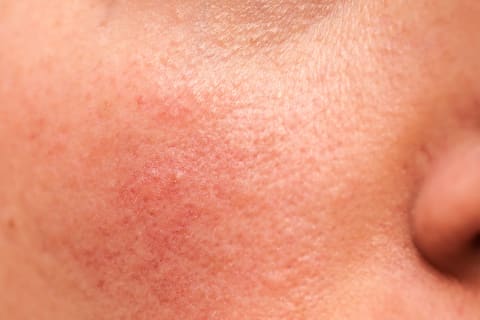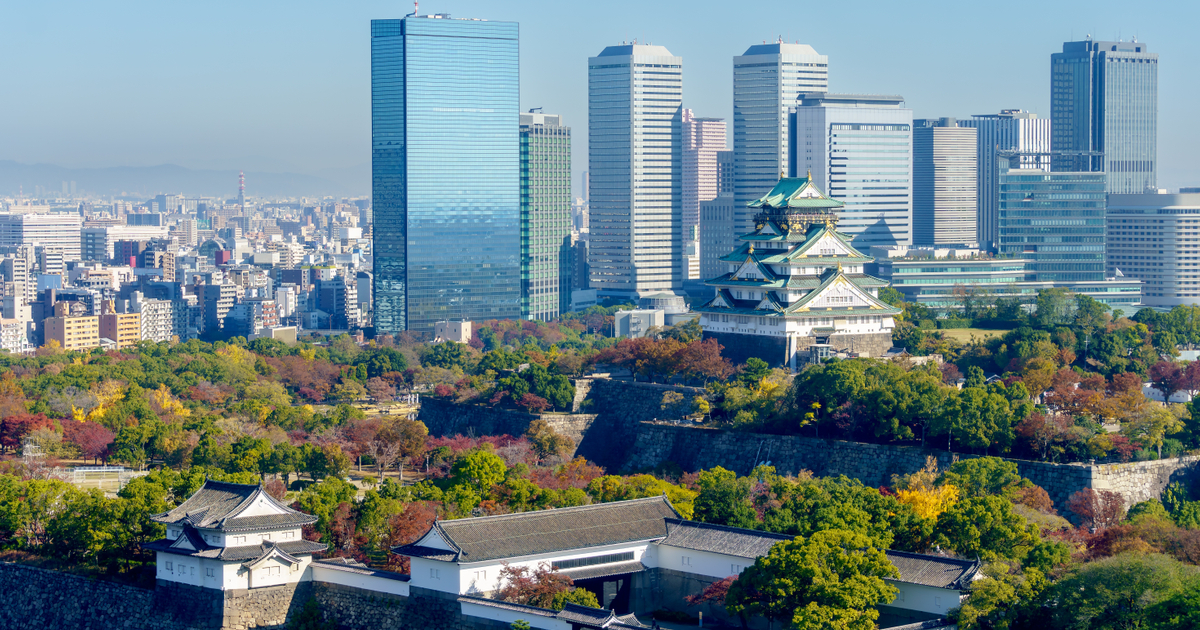Is Your Skin Blotchy? Here Are The Surprising Causes & Quick Remedies
Blotchy skin can be somewhat of a mystery.


mbg Assistant Beauty Editor
mbg Assistant Beauty Editor
Hannah Frye is the Assistant Beauty Editor at mindbodygreen. She has a B.S. in journalism and a minor in women’s, gender, and queer studies from California Polytechnic State University, San Luis Obispo. Hannah has written across lifestyle sections including health, wellness, sustainability, personal development, and more.
Image by Ivan Gener / Stocksy May 30, 2023 Blotchy skin can be somewhat of a mystery. Is it rosacea? Is it a rash? Did you overexfoliate? Unfortunately, finding out the cause of sudden red patches isn’t as easy as we’d like it to be. That being said, education is the first step. Below, a few common causes of blotchy skin and how to soothe your complexion stat, from experts. 
Advertisement
This ad is displayed using third party content and we do not control its accessibility features.
What is blotchy skin and what does it look like?

Image by iStock / russaquarius
“Blotchy skin can appear as an uneven skin tone with red, brown, and even white patches with dilated blood vessels,” explains board-certified dermatologist at Schweiger Dermatology Group in NYC Gloria Lin, MD, FAAD.
She adds, “Depending on the underlying cause, it may also have raised bumps or dry scaly skin associated with it.” When examining your blotches, make sure to note if they’re raised or not, because that’s a key difference between many of the following causes.
The good news: “Many cases of blotchy skin are temporary and could be brought on by exposure to outside influences (e.g., the sun, stress, cold or hot temperature, exercise, sauna, etc.)” notes dermatology nurse practitioner Jodi Logerfo DNP, APRN, FNP-BC.
Advertisement
This ad is displayed using third party content and we do not control its accessibility features.
Blotchy skin causes
As mentioned before, the list of causes here is anything but short. We’ve collected some of the most common below for reference. We’ll attach a hint to each section to aid your understanding of what makes one different from the next.
If you spent time in the sun over the last week (yes, even if you wore SPF), that may be a cause of blotchiness. Sunburns often won’t show up looking uniform, especially if you applied sunscreen sporadically.
Hint
You’ve spent time in the sun in recent days, both with or without sunscreen. When you press your finger to the area, it may become white and then red again.
Advertisement
This ad is displayed using third party content and we do not control its accessibility features.
Logerfo notes alcohol as another common trigger—one that should be fairly easy to spot. The alcohol flush happens to many people, and it’s not necessarily a bad thing. However, it is helpful to be aware of the possible reaction so you can be mindful of when and where you experience a skin flush.
Hint
You are currently or did drink alcohol in the last day. Keep a tab on your notes app or on a piece of paper each time you flush when you drink and what you were drinking for reference as some folks blush more with wine than other types of alcohol.
Advertisement
This ad is displayed using third party content and we do not control its accessibility features.
3.
Exercise or overheating
If your skin is on the fair side, then you probably see a bit of flushing every time you work out or start to feel hot—a normal reaction, we might add. Logerfo notes that those prone to exercise-induced flushing may also see redness post sauna or steam room use.
Hint
You’re currently or have exercised in the last few hours. Some exercise methods will trigger more of a flush, those being cardio-based activities or anything inverted (yoga headstands, for example). Or, you spent time in the sauna or steam room.
Advertisement
This ad is displayed using third party content and we do not control its accessibility features.
Food allergies and sensitivities show up in many forms, one of which is skin flushing. This could show up as raised blotches (like hives), an itchy rash, or just redness. It may be coupled with stomach pain, bloating, or mouth tingling as well. In addition, rosacea is often triggered by certain foods and drinks, like coffee, spicy foods, dairy, and even tomatoes!
The best way to determine if food may be the culprit is to keep a food journal and note each time you flush. Eventually, you may be able to find a correlation. If not, visit your doctor for an allergy test.
Hint
Each time you consume a certain food, your skin flushes. Food sensitivities can develop over time, so don’t dismiss the foods you’ve always eaten without problem quite yet. You may have other full body symptoms show up at the same time.
Logerfo notes dermatitis as another common culprit. You can get contact dermatitis from virtually anything, from detergents to skin care products to toothpaste to plants and more (here’s a longer list if you’re curious).
Contact dermatitis may also itch, peel, swell, blister, or feel hot to the touch. Sometimes dermatitis goes away within a day or so, but persistent cases can be eased with prescription grade products, so visit your derm if you think this is the case.
Remember, the rash could show up on your face even if you didn’t touch the allergen directly to this area, as it can transfer from your hands to your cheeks, lips, eyelids, etc.
Hint
You recently spent time in the woods or nature area, you tried a new laundry soap or skin care product, or the area is itchy.
6.
Exposure to cold or wind
The cold flush is common amongst those with fair skin. Generally, high winds make this flush worse and may dry out the skin, exacerbating any redness that showed up to begin with. This type of blotchiness should go away soon after you enter a warmer space.
Hint
You’re in a new environment with cold, dry, or windy weather. Your skin flush begins to fade when you switch up the temperature of your surroundings.
Board-certified dermatologist Marisa Garshick, M.D., FAAD mentions rosacea as a common trigger, but this one will be more persistent than the rest.
While rosacea does have its own set of triggers (alcohol for some, heat for others, and so on), you’ll see it flaring more often than situational causes like those above.
Hint
Those with rosacea may notice flares from many different sources like UV exposure, heat, alcohol, etc. If your blotchiness comes and goes without a correlated rhyme or reason, you may have rosacea. Visit a dermatologist to be sure.
While acne is typically described as a bump here and there, blotchiness often accompanies pimples. Especially those with under-the-skin cystic pimples, your skin may appear blotchy due to the increased inflammation.
Hint
If you notice pimples in similar areas as your redness, acne may be the cause of your blotchy skin.
Another common skin condition that can cause flushing is eczema. Any redness from eczema will also be accompanied by dryness, flaking, itch, or irritation. Your rash may be present 24/7, or flare when triggered (similar to rosacea) be it by stress, topical irritants, etc.
Hint
Your blotchy patches are also dry, flaky, irritated, or itchy. When you apply product to the area it may sting (especially if it contains fragrance). Your blotchy patches flare when you’re stressed.
Dry skin can lead to a compromised skin barrier, which may appear blotchy, red, and become irritated easily. Seasonal weather changes may call for a heavier moisturizer, some natural skin slugging with botanical oils, or simply more frequent application of moisturizer.
Hint
If your skin is blotchy from dryness, it may also feel rough to the touch or look ashy. Your blotchiness will go away when your skin is adequately hydrated with topical moisturizers.
Ah yes, the experience too many of us share: over exfoliation. This can happen a few different ways: You exfoliated too many times in one week, you used a new exfoliator that was too strong for your skin, or you exfoliated on an already compromised skin barrier.
This applies to both physical (scrubs, facial cleansing brushes, etc.) and chemical exfoliants (AHAs, BHAs, peels, etc.).
Hint
You recently used a chemical or physical exfoliant. If it’s recurring, your blotchiness flares after using this product.
Retinol is no joke, and every derm will tell you to ease into it. Why? To avoid the retinol reaction often characterized by irritation, redness, dryness, and even peeling. Similar to over exfoliation, this could happen due to increased cadence of retinol use, or the product’s potency.
It’s important to note that retinol can even trigger contact dermatitis, especially around the mouth (formally called perioral dermatitis).
Hint
Your blotchiness gets worse after you use retinol. You just started using a new product, just started using retinol in general, or you used it more often than you normally would.
The sole existence of stress acne should prove to you that your skin and your mental health are connected. A perpetual state of stress can cause inflammation in the body, which may show on the skin as red blotches.
Some folks even get stress rashes, which include raised bumps and may spread onto the neck and chest.
Hint
Your skin blotchiness shows up when (or after) you feel stressed. This could be accompanied by breakouts as well.
Garshick notes that brown patches may actually be melasma. This is particularly common above the lip, on the cheeks, and down the neck and chest. Melasma is related to hormonal shifts and tends to show up around the time of menopause for those who menstruate.
Hint
You may be currently experiencing other menopause symptoms. The blotchy patches don’t come and go as often, and they tend to be brown rather than red.
Last but not least, you just might be blushing! This can happen when you’re nervous, stressed, excited, embarrassed, and so on. If it’s simply blushing to blame, the flush won’t last long.
Hint
Your blotchiness is accompanied by an emotion such as embarrassment, nervousness, excitement, etc. It fades quickly.
Quick remedies to soothe skin fast
The most important step you can take when dealing with a blotchy complexion is to identify your triggers and avoid them as much as possible. In the meantime, rely on topical solutions to help soothe your skin from the outside. Below, a few important notes:
Long-term solutions for blotchy skin
Maintaining a healthy skin barrier is the best way to avoid blotchy flare ups. There’s a whole lot to learn about the barrier and how to optimize it (in-depth guide here), but keep the following quick tips in mind for now.
FAQ
What is blotchy skin a symptom of?
There are many different causes of blotchy skin. A few include: Rosacea, eczema, acne, exposure to heat, dryness, stress, melasma, overuse of retinol or chemical exfoliants, exposure to cold, allergies, or sensitivities to topical products or food.
What causes blotchy redness?
There are many different causes of blotchy skin. A few include: Rosacea, eczema, acne, exposure to heat, dryness, stress, melasma, overuse of retinol or chemical exfoliants, exposure to cold, allergies, or sensitivities to topical products or food.
What causes blotchy skin?
Suddenly blotchy skin is most often caused by exposure to cold, wind, or heat. Stress and anxiety also cause sudden skin inflammation, which may appear as blotchy patches. If your skin barrier is damaged from UV exposure, exfoliants, or overuse of retinol, you may see blotchy areas as well.
Can stress cause blotchy face?
The sole existence of stress acne should prove to you that your skin and your mental health are connected. A perpetual state of stress can cause inflammation in the body, which may show on the skin as red blotches. Some folks even get stress rashes, which include raised bumps as well.
Shop products for blotchy skin
The takeaway
Trying to figure out what caused your blotchy skin can be frustrating, but know that most often the blotchiness will go away with attention to skin care and your skin barrier. If you think your skin barrier is damaged but want to be sure, check out this guide.

 KickT
KickT 






























